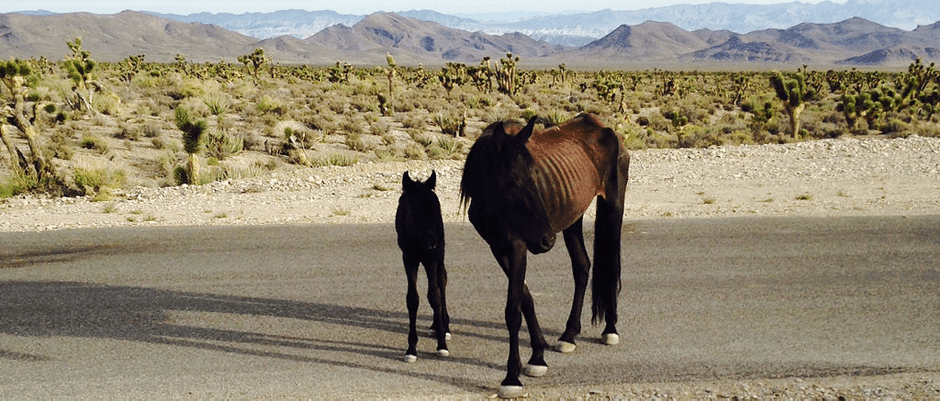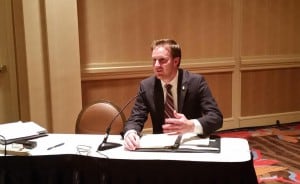Share this article
TWS and Coalition Provide Testimony on Wild Horses
The Wildlife Society’s Government Affairs & Partnerships Director Keith Norris provided testimony to the Wild Horse and Burro Advisory Board at a meeting in Oklahoma City on Thursday. Norris provided oral testimony on behalf of TWS and the National Horse & Burro Rangeland Management Coalition, of which TWS is a founding member and currently chairs. TWS and the Coalition are concerned about the growing population of free-roaming horses and burros due to the detrimental impacts they have on the rangeland ecosystem.
The Wild Horse and Burro Advisory Board was established to advise the Secretary of the Interior, the Secretary of Agriculture, the Director of the Bureau of Land Management (BLM), and the Chief of the Forest Service (FS) on the protection and management of horses and burros on BLM and FS lands. The National Horse & Burro Rangeland Management Coalition is a diverse group of organizations that strive for a well-vetted, science-based approach to the issue. Alongside TWS, Coalition member organizations from the National Association of Conservation Districts and the American Farm Bureau Federation came to speak to the advisory board about the concerns they also have for rangeland health.
As in recent meetings, the main topic of discussion was the differing viewpoints on how to best manage the growing population of horses and burros on public rangelands. On BLM rangelands, these horses and burros currently exceed the BLM-estimated ecologically sustainable level, or Appropriated Management Level (AML), of 26,715 by over 31,000 individuals.
Norris noted in his oral remarks, which summarized TWS’ and the Coalition’s written testimonies, that the increased rates of removals from public rangelands is the most effective and timely way to reach an ecologically tolerable level of horses and burros. He encouraged the expeditious completion of research into population growth suppression methods so they can eventually be applied in the field, but stressed that since no effective or affordable fertility control method currently exists (See 2013 National Academy of Sciences Report) the immediate focus should be on removing horses and burros from the range to protect rangeland health.
Members of the advisory board tasked with discussing items such as the 118% overpopulation of horses and burros on BLM rangelands are from differing perspectives and beliefs as to how horses and burros should be managed in order to provide a well-rounded evaluation of the tools at the disposal of the Departments of the Interior and Agriculture. These individuals are from fields such as wildlife management, veterinary care, livestock management, and humane advocacy.
A passionate discussion was held by advisory board members regarding the BLM’s emergency gather of horses in the Cold Creek area of southern Nevada. As a result of extreme drought conditions that left the horses of this herd malnourished, the BLM had to step in to remove approximately 200 horses to holding facilities to avoid a die-off. The Cold Creek area is part of the Wheeler Pass Habitat Management Area, which prior to this removal was about 650% over AML. As Norris noted in his testimony, problems such as these are entirely preventable if populations are managed within AML.
To learn more about the Wild Horse and Burro Advisory Board, visit the Bureau of Land Management website.
Header Image: Horses on the Cold Creek area of southern Nevada.
Image Credit: BLM Nevada, licensed by cc 2.0









